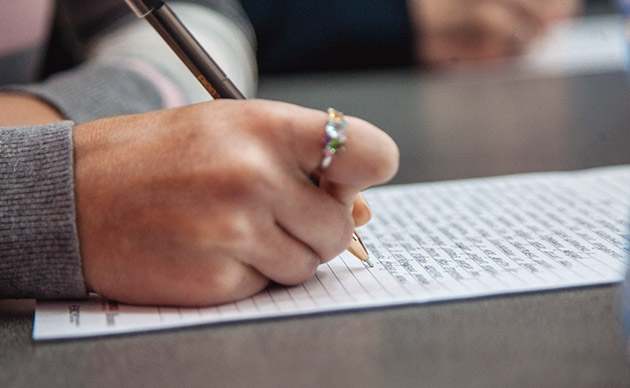Celebrate National Handwriting Day on January 23rd
January 23rd, 2019 marks the 42nd anniversary of National Handwriting Day. Established in 1977 on the birthday of one of America's most celebrated scribes, John Hancock, National Handwriting Day was created to acknowledge the history and influence of penmanship. The Writing Instrument Manufacturers Association (WIMA), National Handwriting Day's founder, offers insight and inspiration to honor the writing holiday.
Why is Handwriting Important?
While the use of technology may make certain tasks easier, the act of putting a pen or pencil to paper and writing has been proven to have a positive impact in many ways. Consistently, you are more likely to remember something you write down than something you type. Creatively, it keeps you more focused on what you're working on and away from the distractions of the digital world. Cognitively, students who handwrite notes outperform those who type. The supporting numbers, found on BIC.com, are staggering – 25% of the United States student population is not proficient in handwriting, and it may be even higher. Of U.S. students in grades four through twelve, 75% write below their grade level, and of U.S. college students, 33% are not prepared to write at a college level when beginning school. Most importantly, found by Hanover Research, handwriting for just 15 minutes per day can help cognitive development, motor skills, writing skills and comprehension.
As we recognize the day, WIMA suggests honoring National Handwriting Day in any of the following ways:
1. Write a letter.
The tale old tradition of receiving a handwritten letter is sadly few and far between, we're all too familiar with eCards and emails. To celebrate, we suggest you find a pen or pencil and a piece of paper and choose someone to write a letter to. It doesn't have to be purposeful and can be silly, it's the thought that counts!
2. Practice your "John Hancock."
There's nothing more official than signing your name on the dotted line. Many children don't know how to write their signature because of the absence of handwriting in their school curriculum. Take the time to brush up on yours and inspire a child to develop their own signature.
3. Draw.
A huge part of handwriting are the utensils you use to do so. Sometimes, it's OK to give kids a break from shaping letters and words and let them express their creativity through drawing. Sketch a picture!
4. Start a journal.
It could be about your goals, dreams and hopes, or even a small recap of your day detailing something important that happened. Starting a journal is a great way to practice your handwriting and to document the things that matter to you.
5. Craft a story.
A large part of writing is storytelling. Whether you choose to make it a hobby or it is your profession, writing stories is an artistic expression. By putting a pen to paper, you create a deeper connection to your thoughts and it serves as a way to watch your thoughts come to life. Use your imagination!
 Celebrate National Handwriting Day on January 23rd
Celebrate National Handwriting Day on January 23rdSource: www.prnewswire.com
When there are no words left, the meaning is still preserved.



